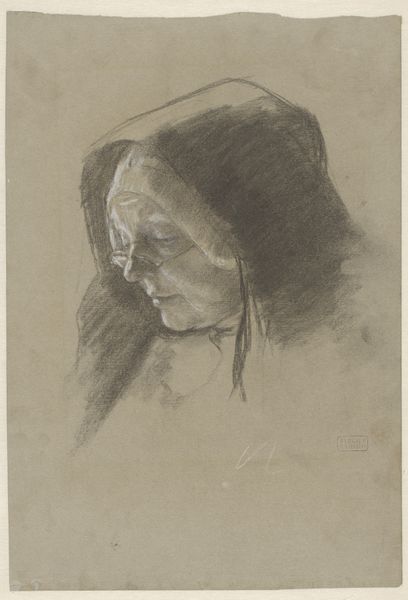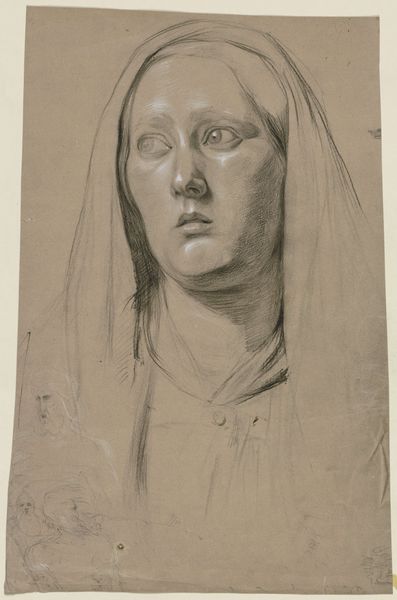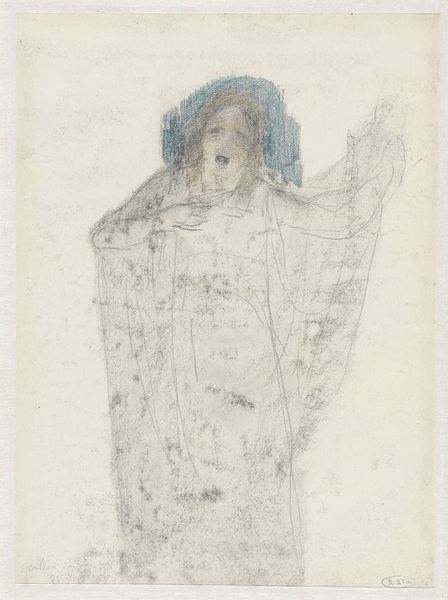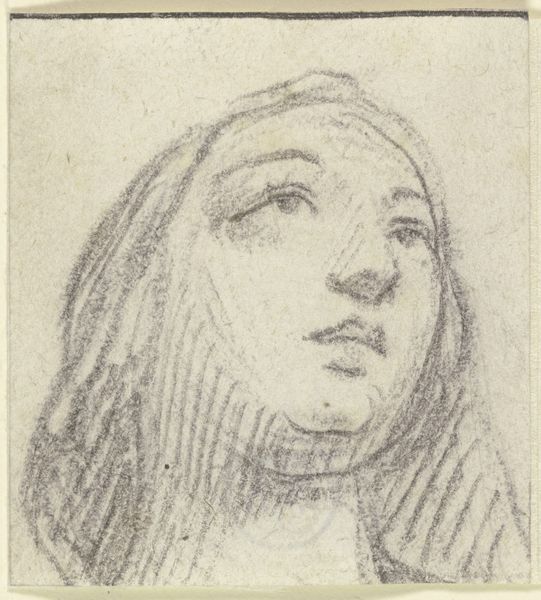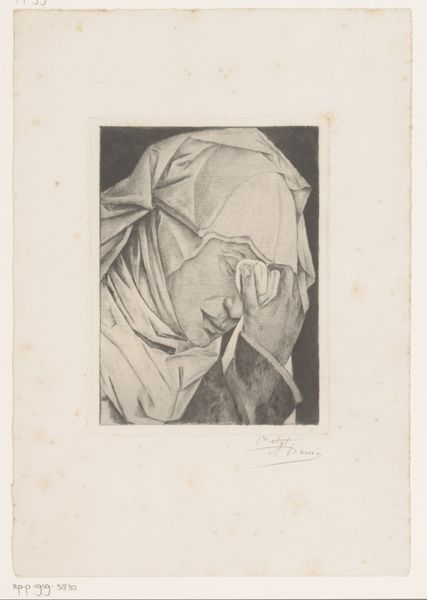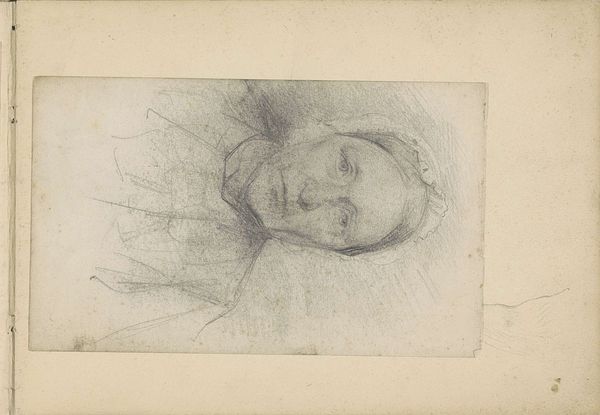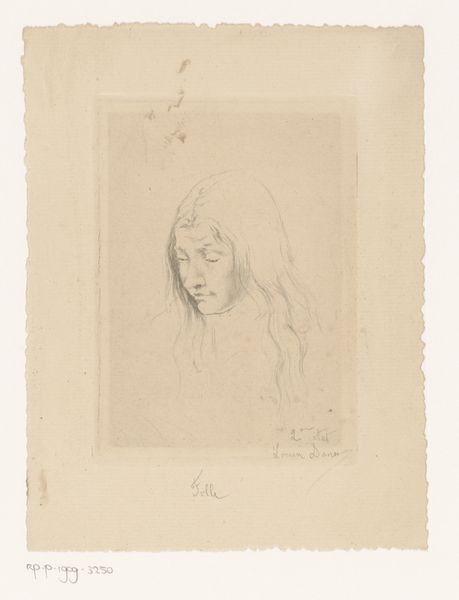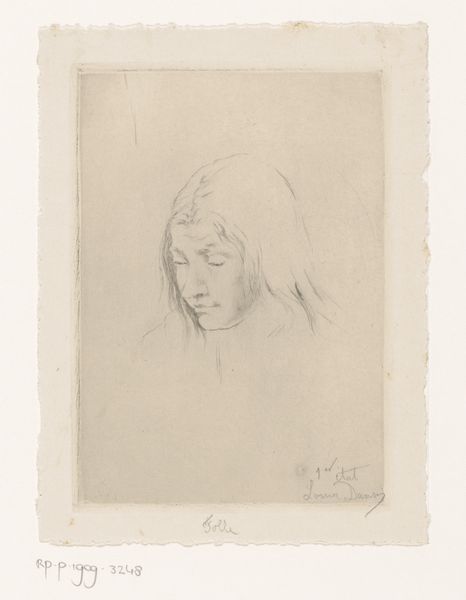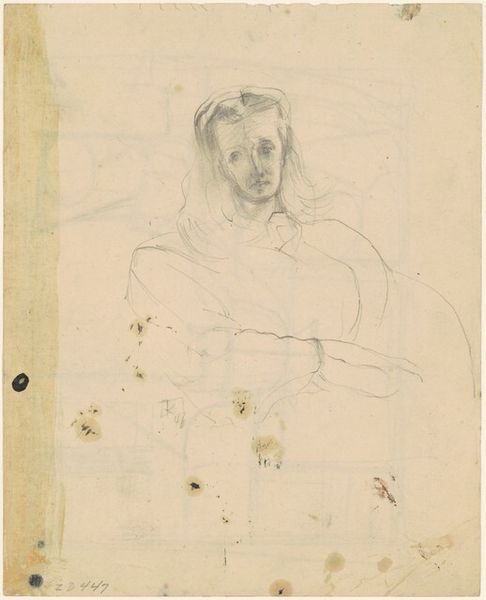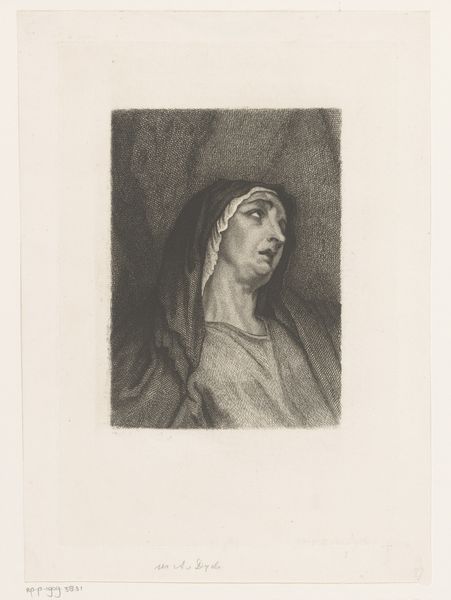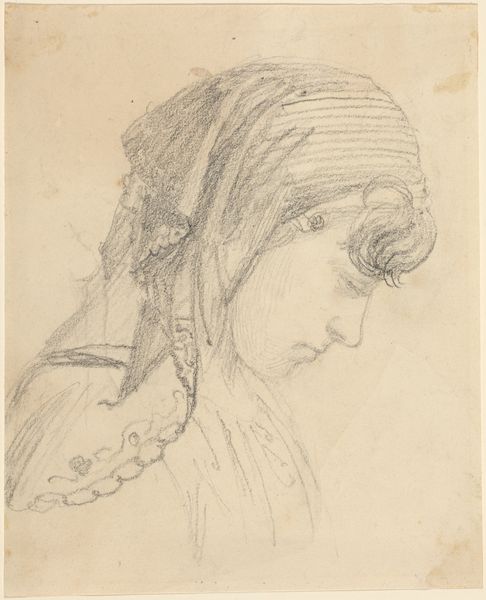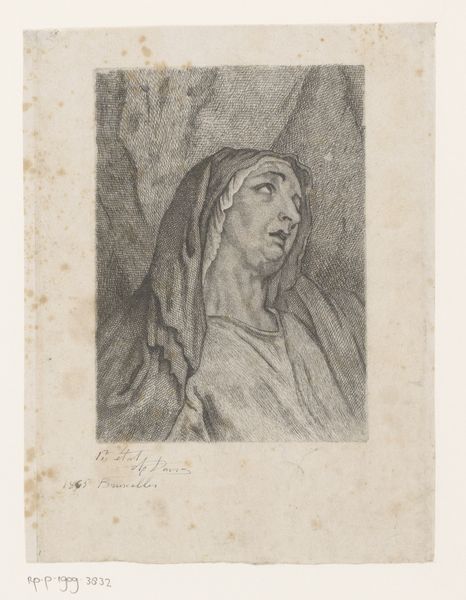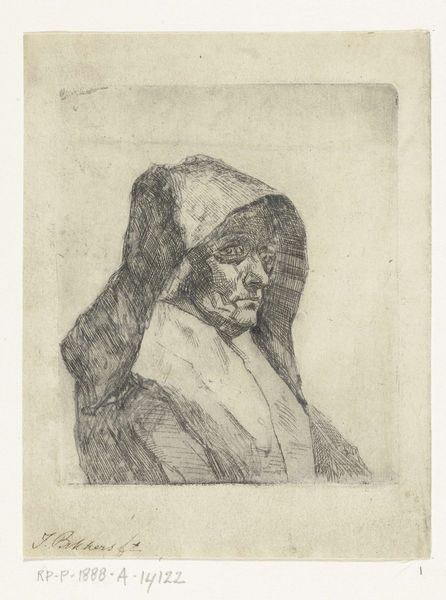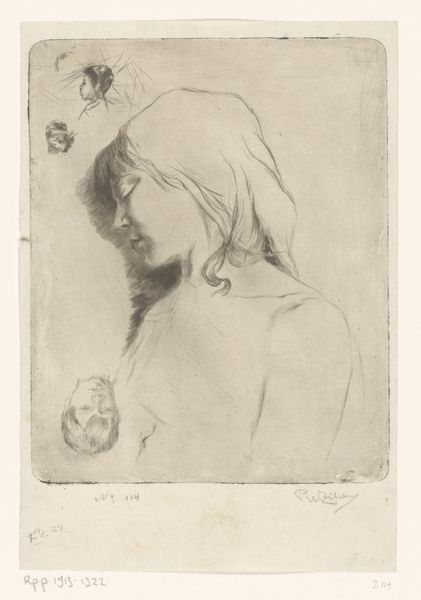
drawing, pencil
#
portrait
#
drawing
#
pencil sketch
#
pencil
#
realism
Copyright: National Gallery of Art: CC0 1.0
Curator: What a serene drawing, capturing a stillness. The work is Tito Lessi’s “Head of a Nun,” created circa 1895-1896, using pencil on paper. Editor: The simplicity strikes me—just a pencil sketch, so direct. I wonder, what kind of pencil did Lessi employ to achieve these shades of gray and the textural effects here? Was it mass-produced or made on commission? Curator: That’s a great observation. Lessi’s piece is compelling because of what it communicates about late 19th-century religious devotion and representation. There’s an interesting contrast here: while other contemporary artists, male and female, overtly struggled to join art’s historic canons, or with representations of women within established structures, Lessi seems to invite his sitter to offer us her inner experience. Editor: I can see how her introspective posture can reflect a broader meditation on women within such orders, but I’m most interested in her habit: how that linen or hemp was sourced, woven, laundered, the repetitive acts involved in producing it, its visual weight counterbalanced by what seems to be the delicacy of the rendering. It almost obscures the figure beneath it, a deliberate effect by the artist? Curator: I agree about that tension, but note how her gaze, though downcast, draws you to contemplate not what is repressed, but the profound agency available within spiritual contemplation, which may have made the life of enclosure desirable for many. The veil, a symbol of repression for some, could have symbolized instead safety and freedom for this individual. Editor: Perhaps. Still, looking closely at this work, its existence as a material object made through manual action, compels me to look at all of art and creative endeavor through this lens. What labor enabled it, and what ideas of craftsmanship might we unpack here? The choices of pencil, paper and level of finish speaks of making processes we should foreground, not set aside. Curator: Absolutely. That close reading reveals the depth this drawing holds, prompting essential questions about the intersection between art and the structures of life that are crucial to acknowledge. Editor: Yes, it moves us beyond the individual in ways that are as challenging as they are poignant.
Comments
No comments
Be the first to comment and join the conversation on the ultimate creative platform.
